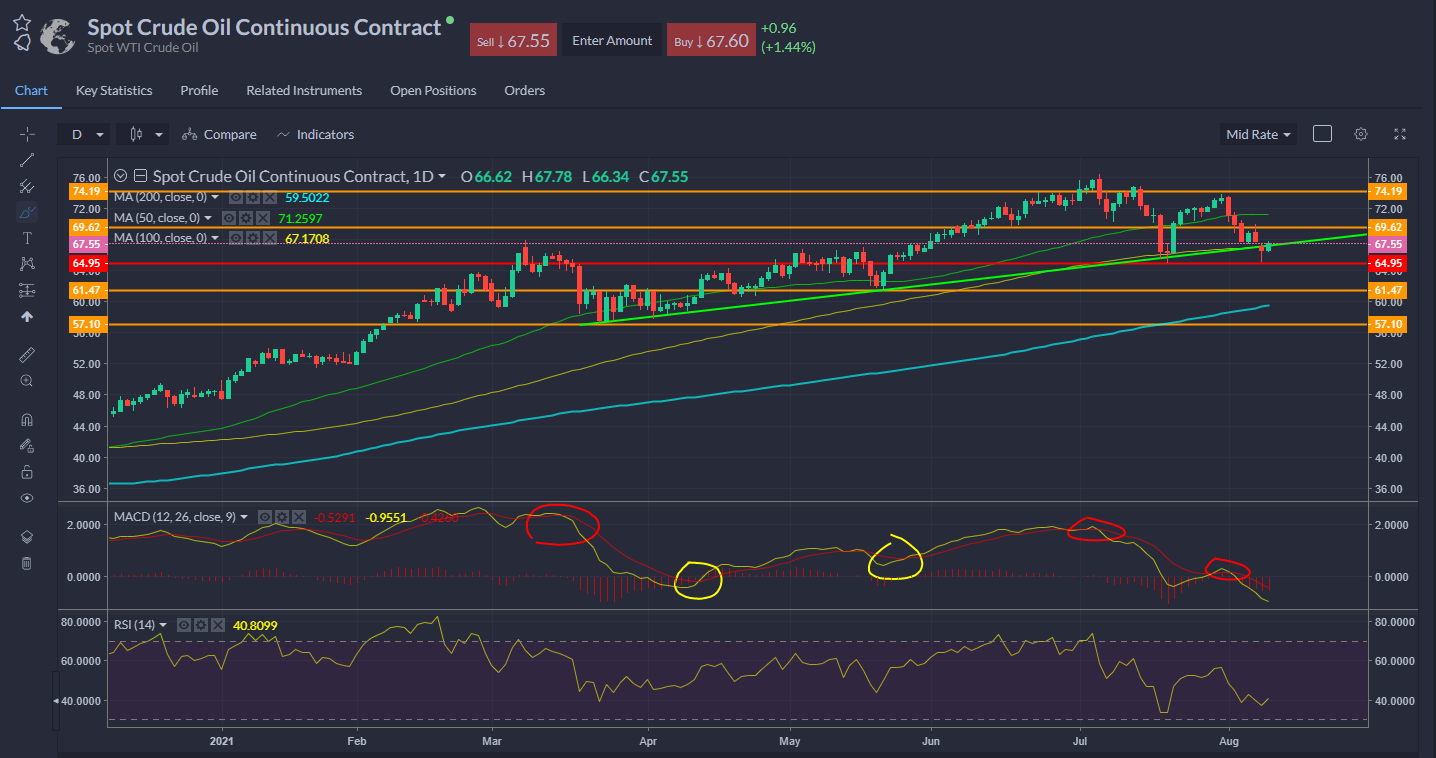Equity markets seem content to trade broadly sideways as investors balanced the ongoing economic recovery with potential worries about delta, inflation and tapering by the Fed. European stock markets edged a little higher in early trade on Tuesday having eked out modest gains on Monday despite a slow start. The FTSE 100 has put in a steady shift since the Jul 19th drop but momentum is starting to ease as the index approaches the top of the range. In Europe, travel and leisure and tech lead the gainers with banks and basic resources weakest. Meanwhile Wall St eased back from record highs yesterday as energy dipped on demand concerns but financials were bid on rising yields as 10s rose above 1.31%. Futures this morning are flat.
Briefly
- Credit Suisse sounded bullish on US equities, initiating its 2022 S&P 500 price target at 5,000, whilst in the near-term raising the 2021-22 EPS estimates to $210 from $200 and $230 from $215.
- JOLTS – 10.1m, new record – US economy is reopening fast and there are jobs out there – but there is a problem with matching supply and demand, so inflation remains the problem ahead.
- Coinbase (NASDAQ:COIN) and MicroStrategy (NASDAQ:MSTR) rallied on the resurgence in crypto markets that pushed Bitcoin back to a 3-month high as it looked to close the gap created by the May crash.
- Meme favourite AMC (NYSE:AMC) rallied 3% as it reported a quarterly loss of $0.77 per share, which was narrower than last time and better than the $0.94 forecast. Revenues were up to $444m from almost zero last year.
- Watches Of Switzerland (LON:WOSG) continues to deliver, reporting this morning Q1 revenues +101.9%, with US revenues +95%. Luxury segment doing well and ecommerce sales up 16% from last year. The strong performance in the first quarter underpins robust confidence in the FY outlook. Shares up almost 3% in early trade.
Taper talk: Atalanta Fed president Bostic said conditions were ripe to begin progressing with tapering, saying that “we are well on the road to substantial progress toward our goal”. The Boston Fed’s Rosengren said the central bank should announce in September that it will begin reducing its $120 billion QE programme in the autumn. He explained that the "substantial further progress" goal had been met for inflation, though there is still a little further to go for the jobs market.
Remember the big data point this week is tomorrow’s US CPI number: forecast +0.4% vs +0.9% for June, while core is seen at +0.4% vs +0.9% in June. However, the jawboning we are seeing from Fed speakers already this week indicates that Jay Powell is ready to make the leap.
Oil: a worry about demand? We posted a while back that the big worry for the oil market was that expectations for demand recovery this year were based on some pretty significant back-loading in the second half of the year. OPEC said it thinks demand should rise 6m bpd in 2021, with 5m bpd of that figure due to arrive in H2. On July 1st I noted that this presents a risk as oil demand recovery is weighted to the second half of the year and may not emerge due to new restrictions on mobility in response to new waves of the virus. So even as the West gets vaccinated, there are many problems with this rosy demand outlook.
1) Even with the West vaccinated, outside of the richest countries the pandemic is still very real and continues to drag on demand as much as last year. Note for example the biggest drop in Chinese air travel since the pandemic began, with a 32% drop in available seats due to rising cases. Banks are becoming less upbeat about the wider prospects for the Chinese economy, too. JPMorgan cut its forecast for Q3 GDP growth from 7.4% to 6.7%, Nomura cut from 6.4% to 5.1% and Goldman Sachs cut from 5.8% to 2.3%. SCMP reports this morning that China’s local Covid-19 cases have hit their highest daily total of latest outbreak.
2) The permanent impairment in the velocity of people is real, even where the populace is largely vaccinated (eg the UK, where figures that Sage scientists use show fewer face-to-face contacts now than even last summer). Air travel around Europe is a long way from 2019 levels.
3) The risk of new variants spreading among largely-vaccinated populations is a worry still, and has particular implications for oil markets.
WTI prices yesterday flirted with the July lows and look susceptible to a further pullback if this level just shy of $65 (spot) is breached, with the trend line drawn off the lows since March now the battleground. A return to $74 is required for bulls to regain control. Rejection of the $64 handle has allowed for a small rally back to the highs of yesterday, however momentum seems with the bears still as prices wrestle with the medium-term trend support.

